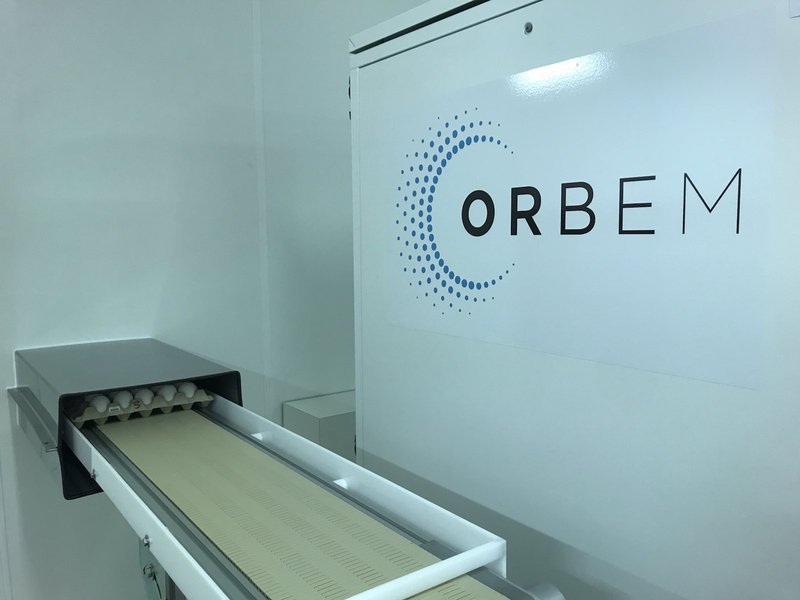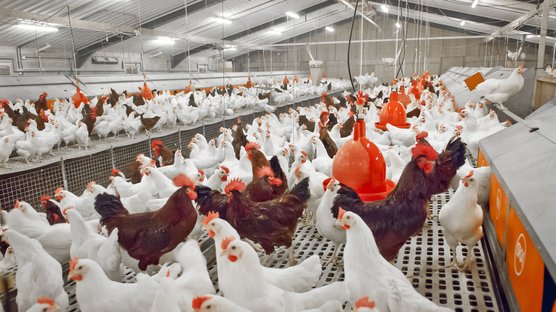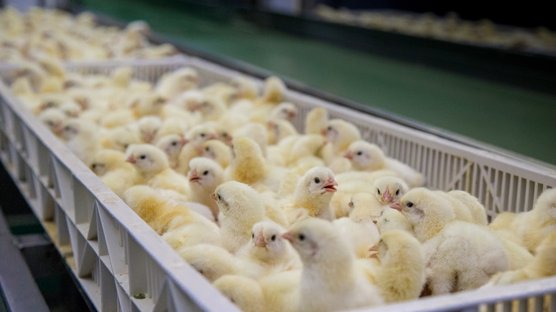
Published on June 9, 2022
Orbem revealing what’s hidden inside the hatching egg
We are pleased to announce that we (Business Unit Layers, SASSO, and the SAPPSA consortium) have started a research collaboration with Orbem, a Munich startup that links magnetic resonance imaging (MRI), with artificial intelligence (AI). This collaboration allows us to integrate affordable and fast MRIs into our hatchery operations. We are excited that we are the very first hatchery where the Genus device is currently running, the results of the first studies are currently being analyzed.
Orbem was founded by Dr. Maria Laparidou, Dr. Miguel Molina and Dr. Pedro Gómez. Dr. Molina and Gómez both got their PhDs in the field of artificial intelligence in magnetic resonance imaging at the Technical University of Munich (TUM), while Dr. Laparidou got her PhD in the embryonic development of chickens at the Ludwig Maximilian University of Munich, followed by a research post at the TUM. This unique combination of passionate people and their relevant expertise formed the basis for Orbem.
In 2021 they were selected for the EU European Innovation Council (EIC) Accelerator grant (€2.5M). The EIC Accelerator supports, in particular startups and spinout companies to develop and scaleup game-changing innovations. Orbem was among the 2.3% of companies selected for funding in a competitive selection process.
So, what is Orbem about?
Entire industries waste resources and only realize a fraction of their potential because they – literally – can’t look under the surface of their products, their processes and data. At Orbem they combine imaging technologies (in this case Magnetic Resonance Imaging, MRI) with artificial intelligence, also called deep learning. This combination of AI and MRI allows ORBEM to generate new findings. With Genus, the device they developed for hatcheries, they can classify hatching eggs before they are being set, allowing the infertile eggs and non-vital embryo’s to be useable as food instead of feed.
MRI is nothing new, almost every hospital is making use of MRI technology for scanning the organs and tissues. It’s a fantastic technology with an incredible amount of potential, but it also comes with extremely high investment cost. That’s is the main reason why the implementation of MRI in non-clinical settings have been extremely limited. Orbem has made use of artificial intelligence to build affordable, fast and versatile MRIs. By generating images for algorithms, they have really opened doors for a multitude of new applications – such as in the poultry industry. The biggest advantage of using MRI in a hatchery, is that it allows you to see inside hatching eggs without destroying them. Allowing to identify the fertility prior to incubation, the viability of an egg, and even at a later age the gender of the embryos. Results are generated very quickly as the AI component classifies instantly. By selecting out the infertile and unviable eggs at the earliest moment as possible with MRI, you can optimize hatchery utilization, and potentially find new markets for the infertile and unviable eggs.
Overall the potential benefits of the Orbem Technology:
- Sell the infertile and unviable eggs into the food market.
- Incubate only eggs that will develop into a healthy chick and reduce costs.
- Increase hatchability and productivity with the same installed capacities.
- Reduce the risk of contamination and exploding eggs.
- Increase quality, biosecurity, and cleanliness.
- Obtain insights into operational processes on day 0.
"Orbem, transforming MRI from slow, expensive, and complicated, to fast, accessible, and simple!"




